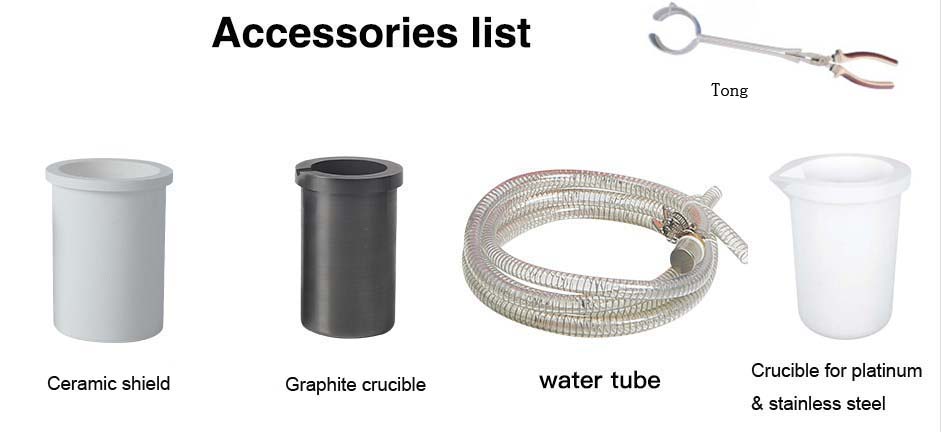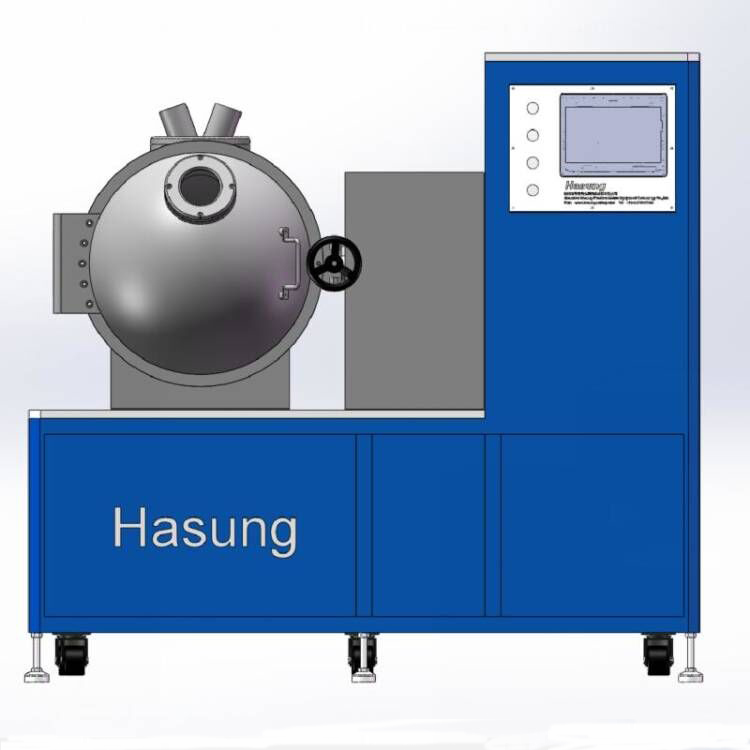
Induction Melting Furnace for Gold Platinum Silver Copper Rhodium Palladium
Technical Parameters
With the MU series We offer melting equipment for many different demands and with crucible capacities from 1kg up to 8kg(Au). The metal materials are molten in open crucibles and poured by hand with a tong into the necessary mould.
Melting Units MU Series
Flexible melting machines are designed to melt gold and silver alloys and as well as aluminium, bronze, brass, etc. Due to the strong induction generator up to 15 kW and the low induction frequency the stirring effect of the metal is excellent.
The MUQ series as induction melting machines for platinum, palladium, rhodium, gold, silver, etc.
The MUQ series apply higher power comparing to MU series which can easily melt thoese high melting point metals in a fast way.
Once you purchase the Hasung induction gold furnace for melting gold, silver, copper and other alloys, it serves as an investment because it can last for years, making your cost of production efficient.
Melting with this electric gold furnace is efficient and fast enough to melt all metals within 2 to 4 minutes. The fast melting rate does not affect the quality of melting at all.
The induction heating system of our melting machine for silver and gold makes the crucible to get heated at the same rate, making all energy savings comparing to other suppliers. With the same power supply, Hasung's machine is much faster melting speed.
Technical Parameters
| Model No. | HS-MU10 | HS-MU2 | HS-MU3 | HS-MU4 | HS-MU5 | HS-MU6 | HS-MU8 |
| Voltage | 220V single phase/380V 3 phases; 50/60Hz | 380V, 3 phases, 50/60Hz | |||||
| Power | 15KW / 20KW 15KW | 15KW | 20KW/25KW | ||||
| Max Temp | 1600°C | ||||||
| Melting Time | 1-2 min. | 1-2 min. | 2-3 min. | 2-3 min. | 2-3 min. | 3-5 min. | |
| PID temp control | Optional | ||||||
| Temp Accuracy | ±1°C | ||||||
| Capacity (Gold) | 10kg | 2kg | 3kg | 4kg | 5kg | 6kg | 8kg |
| Application | Gold, K gold, silver, copper and other alloys | ||||||
| Cooling type | Water chiller(sold separately) or Running water | ||||||
| Dimensions | 56x48x88cm | ||||||
| Net Weight | approx. 85kg | approx. 62kg | approx. 65kg | approx. 66kg | approx. 68kg | approx. 70kg | approx. 72kg |
| Shipping Weight | approx. 135kg | approx. 89kg | approx. 92kg | approx. 95kg | approx. 98kg | approx. 105kg | approx. 110kg |
| Model No. | HS-MUQ1 | HS-MUQ2 | HS-MUQ3 |
| Voltage | 380V ; 50/60Hz 3phases | ||
| Power | 15KW | 20KW | |
| Max Temp | 2100°C | ||
| Melting Time | 1-2 min. | 1-2 min. | 3-5 min. |
| Temp Accuracy | ±1°C | ||
| PID temp control | Optional | ||
| Capacity (Pt) | 1kg | 2kg | 3kg |
| Application | Platinum, Palladium, Stainless steel, Gold, K gold, silver, copper and other alloys | ||
| Cooling type | Water chiller(sold separately) or Running water | ||
| Dimensions | 56x48x88cm | ||
| Net Weight | approx. 60kg | approx. 62kg | approx. 63kg |
| Shipping Weight | approx. 89kg | approx. 94kg | approx. 95kg |
Product Display

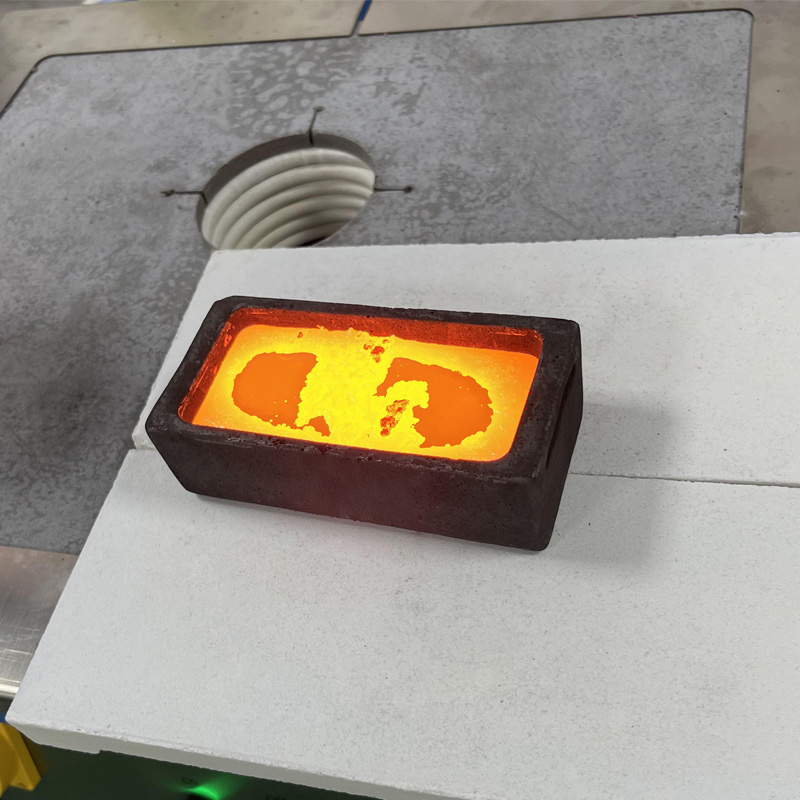
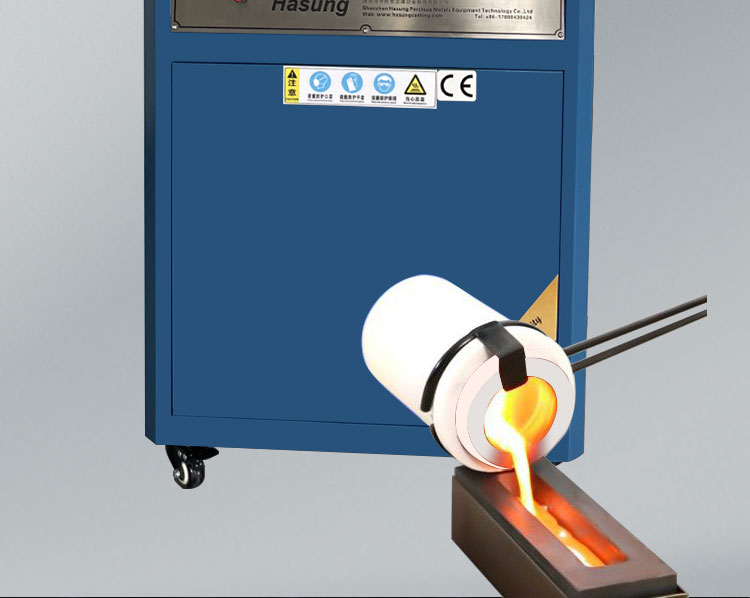
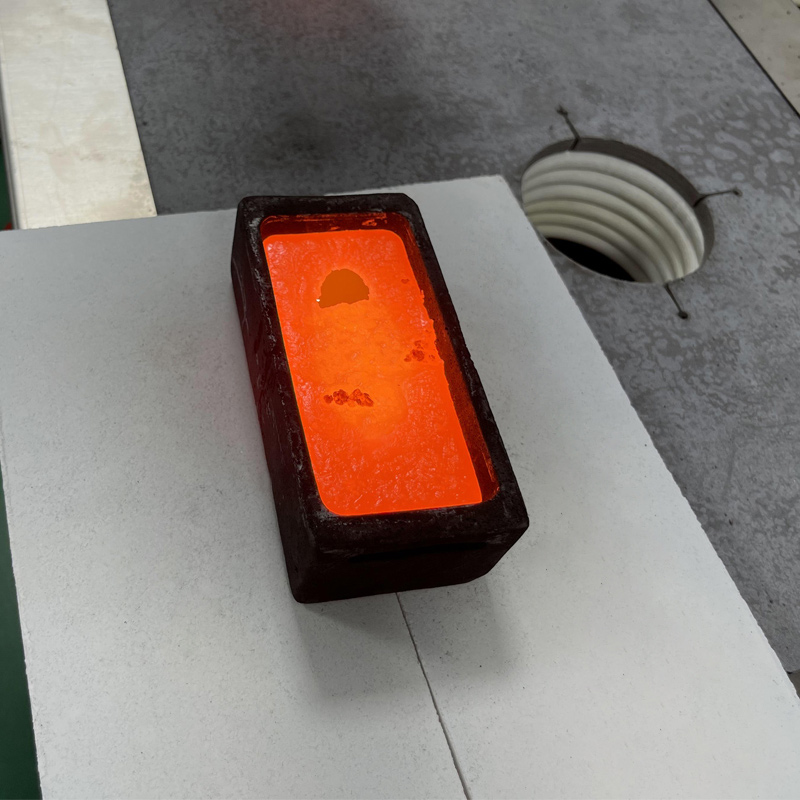
.png)
Application
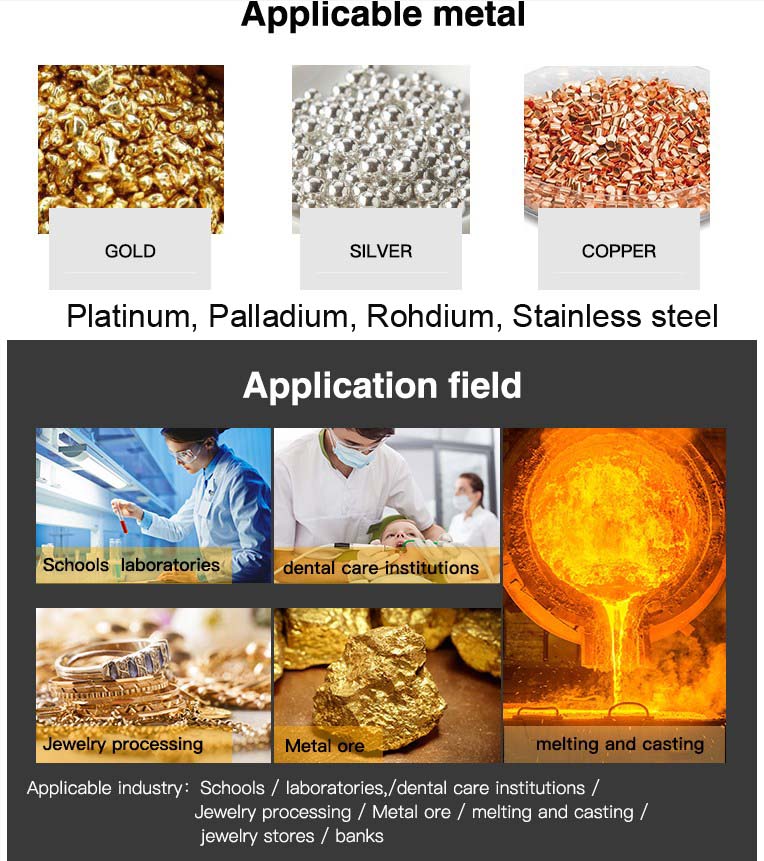
The Multifaceted Advantages of 2 - 10 kg Small Induction Melting Furnaces
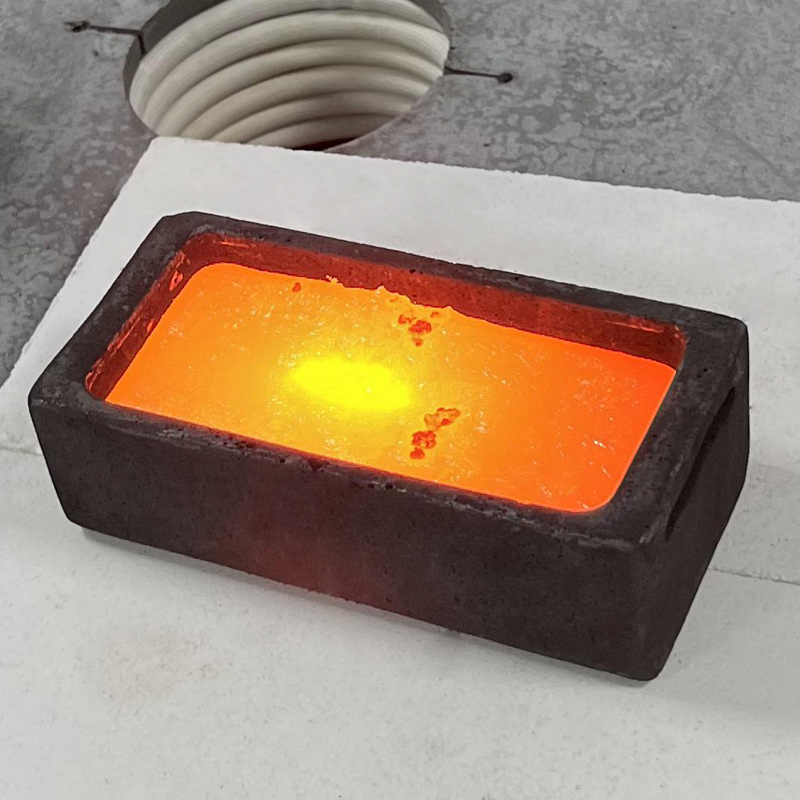
1. Introduction
Small induction melting furnaces with a capacity ranging from 2 kg to 10 kg have carved out a significant niche in various industries. These compact yet powerful units are designed to meet the needs of operations that require melting relatively small quantities of metals, offering a host of advantages over larger - scale or traditional melting methods.
2. Energy - Efficiency
2.1 High - Frequency Induction Heating
Small induction melting furnaces operate on the principle of electromagnetic induction. High - frequency alternating currents are passed through a coil, creating a magnetic field. When a metal charge is placed within this field, eddy currents are induced in the metal. These eddy currents encounter the resistance of the metal, generating heat according to the formula Q = I^{2}Rt (where Q is heat, I is current, R is resistance, and t is time). This method of heating is highly efficient as it directly heats the metal from within. In contrast to some traditional fuel - fired furnaces, there is no need to heat the surrounding environment first, reducing heat loss. For example, compared to a small gas - fired furnace, a 5 - kg induction melting furnace can save up to 30 - 40% of energy during the melting process. This energy - saving feature not only cuts down on operational costs but also contributes to environmental sustainability by reducing overall energy consumption.
3. Precision and Quality
3.1 Precise Temperature Control
One of the remarkable advantages of these small induction melting furnaces is their ability to provide precise temperature control. They are equipped with advanced temperature - sensing and control systems. Operators can set the desired melting temperature accurately, often within a tolerance of ±5 °C. This is crucial when melting metals that have specific melting points and when alloying metals, as maintaining the correct temperature ensures proper melting and homogeneous mixing of different elements. For instance, when melting a specific alloy of copper and zinc to produce brass, precise temperature control ensures the correct ratio of the two metals is maintained, resulting in a high - quality, consistent product.
3.2 Reduced Contamination
Induction melting is a relatively clean process. Since there is no combustion involved as in the case of fuel - fired furnaces, there is less risk of introducing contaminants into the molten metal. Combustion - based furnaces can release sulfur, nitrogen oxides, and particulate matter, which can react with the metal and cause impurities. In a small induction melting furnace, the only potential source of contamination is the metal charge itself, and with proper handling, this can be minimized. This leads to a purer final product, which is highly desirable in industries such as jewelry making and electronics component production.
4. Flexibility
4.1 Multiple Metal Compatibility
Small induction melting furnaces can handle a wide variety of metals. Whether it's ferrous metals like iron and steel or non - ferrous metals such as aluminum, copper, and precious metals like gold and silver, these furnaces can be adjusted to meet the melting requirements of different materials. Each metal has a different melting point, and the power and temperature settings of the induction furnace can be easily modified. For example, aluminum melts at around 660 °C, while gold melts at about 1064 °C. The furnace can be programmed to reach and maintain the appropriate temperature for each metal, making it a versatile tool in workshops that deal with different metal - based projects.
4.2 Variable Batch Sizes
With a capacity range from 2 kg to 10 kg, these furnaces are suitable for different batch - size requirements. Small - scale enterprises or hobbyists who may only need to melt a few kilograms of metal at a time can benefit from the lower - end capacity models. On the other hand, small - to - medium - sized industrial operations that require slightly larger batches but still within the 10 - kg limit can also find these furnaces to be a perfect fit. This flexibility in batch size allows for cost - effective production as there is no need to over - invest in a much larger furnace for small - scale production runs.
5. Compact Size and Ease of Use
5.1 Space - Saving Design
The compact size of 2 - 10 kg small induction melting furnaces makes them ideal for workshops with limited space. They can be easily placed on a workbench or in a corner of a small factory. Unlike large industrial furnaces that require a dedicated, spacious area for installation and operation, these small units can be integrated into existing workspaces without much hassle. This is particularly beneficial for small - scale manufacturers, jewelry studios, and educational institutions that may not have the luxury of a large - scale production facility.
5.2 User - Friendly Operation
These furnaces are designed to be user - friendly. They often come with intuitive control panels that allow operators to start, stop, and adjust the melting process with ease. Even those with limited technical knowledge can quickly learn to operate the furnace after a short training period. The automated features, such as temperature control and power regulation, also reduce the complexity of the melting process, making it accessible to a wider range of users.
6. Cost - Effectiveness
6.1 Lower Initial Investment
Compared to large - scale industrial melting furnaces, the initial cost of a 2 - 10 kg small induction melting furnace is significantly lower. This makes it an affordable option for small - scale businesses, startups, and hobbyists who are looking to enter the metal - melting and casting market. The lower investment also means that the return on investment can be achieved more quickly, especially when considering the energy - savings and high - quality output these furnaces offer.
6.2 Reduced Maintenance Costs
Small induction melting furnaces generally have fewer components compared to larger, more complex furnaces. This simplicity in design results in lower maintenance requirements. There are no complex combustion systems to maintain, and the induction coils and other key components have a relatively long lifespan if properly maintained. Regular maintenance tasks mainly involve checking the temperature sensors, power connections, and the integrity of the furnace lining, which are relatively straightforward and cost - effective procedures.
7. Conclusion
In summary, 2 - 10 kg small induction melting furnaces offer a combination of energy - efficiency, precision, flexibility, ease of use, and cost - effectiveness. Their ability to produce high - quality melts while being adaptable to different metals and batch sizes makes them an invaluable asset in a wide range of applications, from small - scale manufacturing to artistic metalworking and educational research. As technology continues to advance, these small induction melting furnaces are likely to become even more efficient and versatile, further expanding their utility in various industries.
- English
- French
- German
- Portuguese
- Spanish
- Russian
- Japanese
- Korean
- Arabic
- Irish
- Greek
- Turkish
- Italian
- Danish
- Romanian
- Indonesian
- Czech
- Afrikaans
- Swedish
- Polish
- Basque
- Catalan
- Esperanto
- Hindi
- Lao
- Albanian
- Amharic
- Armenian
- Azerbaijani
- Belarusian
- Bengali
- Bosnian
- Bulgarian
- Cebuano
- Chichewa
- Corsican
- Croatian
- Dutch
- Estonian
- Filipino
- Finnish
- Frisian
- Galician
- Georgian
- Gujarati
- Haitian
- Hausa
- Hawaiian
- Hebrew
- Hmong
- Hungarian
- Icelandic
- Igbo
- Javanese
- Kannada
- Kazakh
- Khmer
- Kurdish
- Kyrgyz
- Latin
- Latvian
- Lithuanian
- Luxembou..
- Macedonian
- Malagasy
- Malay
- Malayalam
- Maltese
- Maori
- Marathi
- Mongolian
- Burmese
- Nepali
- Norwegian
- Pashto
- Persian
- Punjabi
- Serbian
- Sesotho
- Sinhala
- Slovak
- Slovenian
- Somali
- Samoan
- Scots Gaelic
- Shona
- Sindhi
- Sundanese
- Swahili
- Tajik
- Tamil
- Telugu
- Thai
- Ukrainian
- Urdu
- Uzbek
- Vietnamese
- Welsh
- Xhosa
- Yiddish
- Yoruba
- Zulu
- Kinyarwanda
- Tatar
- Oriya
- Turkmen
- Uyghur




.png)





-300x300.png)


